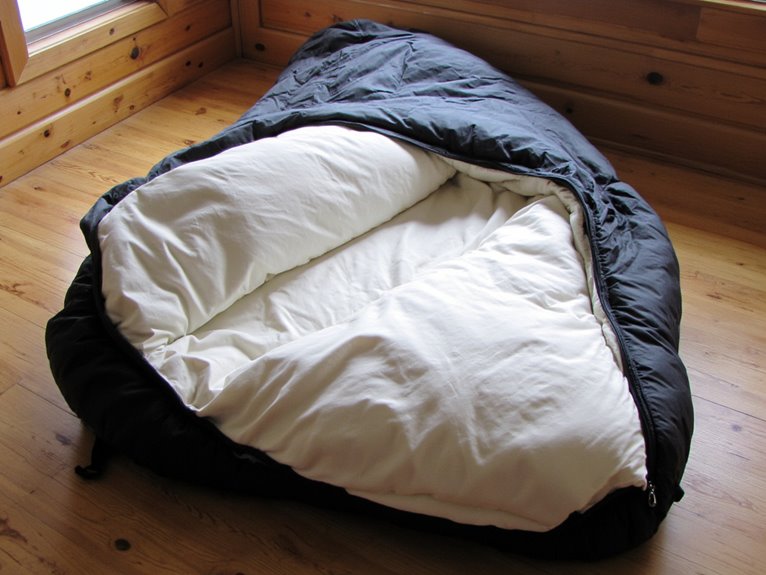Why Do Climbers Have Bad Posture?
Climbers often develop poor posture due to a mix of physical demands, muscle imbalances, and repetitive strain. Constantly gazing upward and unevenly distributing weight on their feet leads to a chain reaction of postural issues. Weaknesses in core and glutes, along with overuse and repetitive movements, only add to the problem. Even mental and emotional factors, like fear and anxiety, can impact posture. But there's hope! By understanding these factors, climbers can take proactive steps to improve their posture and, ultimately, their climbing performance. And that's just the starting point – there's more to discover.
We are supported by our audience. When you purchase through links on our site, we may earn an affiliate commission, at no extra cost for you. Learn more. Last update on 16th January 2026 / Images from Amazon Product Advertising API.
Physical Demands of Climbing
As climbers ascend vertical terrain, their bodies are subjected to a multitude of physical demands that can exacerbate poor posture.
From the constant upward gazing to the uneven distribution of weight on the feet, these demands can be detrimental to climbers' posture.
The upward gaze, necessary for route-reading and finding handholds, can lead to a forward head position, putting strain on the neck and shoulders.
Meanwhile, the uneven distribution of weight on the feet, often with more weight on the balls of the feet, can cause the ankles to pronate and the knees to compensate, leading to a chain reaction of poor posture.
These physical demands can lead to a range of postural issues, making it essential for climbers to prioritize good posture and take preventative measures to mitigate these effects.
Muscle Imbalances and Weakness
Climbers' muscle imbalances and weaknesses, often developed through repetitive movements and overcompensation, can further exacerbate poor posture by creating a ripple effect of instability throughout the entire kinetic chain.
As climbers, we tend to overuse certain muscle groups, such as the latissimus dorsi and biceps, while neglecting others, like the trapezius and rhomboids.
This can lead to a strength imbalance, causing our shoulders to roll forward and our heads to jut forward, perpetuating poor posture.
Weakness in the core and glutes can also contribute to a lack of stability, making it difficult to maintain good posture.
Overuse and Repetitive Strain
One hundred-plus moves on the same climbing route can take a toll on the body, leading to repetitive strain and overuse injuries that ultimately compromise posture.
Climbers often neglect to acknowledge the cumulative effect of repeated movements, such as gripping, pulling, and pushing, which can lead to inflammation and fatigue in the muscles, tendons, and ligaments.
As a result, the body compensates by adopting poor posture to avoid discomfort or pain, perpetuating a cycle of strain and misalignment.
It's essential for climbers to recognize the signs of overuse and take proactive steps to manage fatigue, incorporate rest days, and engage in cross-training exercises to maintain overall physical resilience.
Body Positioning and Movement
Proper body positioning and movement techniques are essential for maintaining good posture, as they directly influence the distribution of weight, tension, and stress on the muscles and joints. Climbers often neglect these fundamental skills, leading to poor posture and increased risk of injury.
Mindful footwork: Avoid heavy footsteps and instead focus on light, deliberate steps to reduce impact on your joints.
Shoulder relaxation: Release tension in your shoulders and avoid scrunching up towards your ears.
Core engagement: Engage your core muscles to support your lower back and maintain a stable posture.
Hip alignment: Keep your hips aligned with your shoulders and ankles to maintain a neutral spine.
Mental and Emotional Factors
Beyond physical technique, mental and emotional factors, such as fear, anxiety, and self-doubt, can profoundly impact posture and overall climbing performance.
When we're gripped by fear, our bodies tense up, causing us to hunch over and compromise our posture.
Anxiety can lead to rushed movements, further disrupting our center of gravity and balance.
Self-doubt can make us question our abilities, causing us to second-guess our every move and lose confidence in our climbing.
These mental and emotional factors can be just as debilitating as physical limitations, making it essential to address them in order to improve our posture and overall climbing performance.
Gear and Equipment Influence
Two key factors in maintaining good posture while climbing are the gear and equipment we use, as they can either support or hinder our ability to maintain ideal body positioning.
It's essential to choose gear that fits comfortably and allows for a full range of motion.
Ill-fitting harnesses can cause climbers to slouch or lean to one side, leading to poor posture.
Heavy or unbalanced packs can force climbers to compensate by leaning forward or backward, putting strain on the back and shoulders.
Improperly fitted shoes can cause climbers to adopt an unnatural gait, leading to poor posture and discomfort.
Poorly designed or worn-out ropes can cause climbers to adopt awkward positions, straining their backs and shoulders.
Lack of Proper Warm-Ups
In addition to gear and equipment, a often-overlooked factor contributing to bad posture in climbing is the lack of a thorough warm-up, which can lead to stiff muscles and poor body positioning from the very start of the climb.
A good warm-up prepares your muscles for the upcoming physical demands, increasing flexibility and reducing the risk of injury.
Without it, you're basically asking your body to go from zero to hero, which can result in poor posture and discomfort.
Take the time to stretch, jog, or do some light cardio before you start climbing – your body (and your posture) will thank you.
A proper warm-up is like a pre-climb high-five for your muscles; it sets you up for success and helps you climb stronger, longer, and with better posture.




